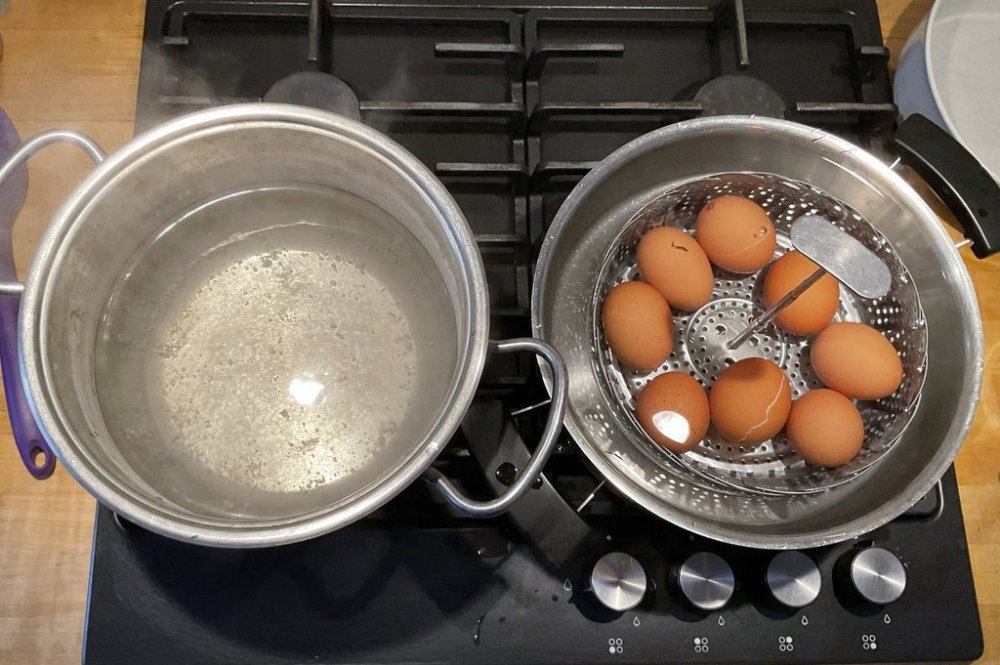How to cook the perfect boiled egg, according to science
Advertisement
Read this article for free:
or
Already have an account? Log in here »
To continue reading, please subscribe:
Monthly Digital Subscription
$1 per week for 24 weeks*
- Enjoy unlimited reading on winnipegfreepress.com
- Read the E-Edition, our digital replica newspaper
- Access News Break, our award-winning app
- Play interactive puzzles
*Billed as $4.00 plus GST every four weeks. After 24 weeks, price increases to the regular rate of $19.00 plus GST every four weeks. Offer available to new and qualified returning subscribers only. Cancel any time.
Monthly Digital Subscription
$4.75/week*
- Enjoy unlimited reading on winnipegfreepress.com
- Read the E-Edition, our digital replica newspaper
- Access News Break, our award-winning app
- Play interactive puzzles
*Billed as $19 plus GST every four weeks. Cancel any time.
To continue reading, please subscribe:
Add Winnipeg Free Press access to your Brandon Sun subscription for only
$1 for the first 4 weeks*
*$1 will be added to your next bill. After your 4 weeks access is complete your rate will increase by $0.00 a X percent off the regular rate.
Read unlimited articles for free today:
or
Already have an account? Log in here »
Hey there, time traveller!
This article was published 06/02/2025 (236 days ago), so information in it may no longer be current.
NEW YORK (AP) — Scientists say they’ve cracked the code for boiling the perfect egg.
It’s a recipe you can test for yourself — though the timing isn’t ideal with soaring egg prices in the United States from a bird flu outbreak.
The perfect boiled egg has a velvety yolk paired with a soft, solid white.

Achieving this balance can be a challenge because the yolk cooks at a lower temperature than the white. Hard boiling an egg can yield a chalky yolk, while cooking low and slow can produce jelly-like, undercooked whites.
Researchers cooked hundreds of eggs and used math to tackle this runny conundrum. One equation dealt with how heat travels between a hot surface and an egg; another captured how the egg’s contents morph from liquid to solid with a gel-like state in between.
Their final recipe involves transferring eggs in a steamer basket every two minutes between two bowls of water — one boiling and the other lukewarm at 86 degrees Fahrenheit (30 degrees Celsius) — for a total of 32 minutes before cooling under running water and peeling.
“You could definitely do this at home with half a dozen eggs or so,” said Gregory Weiss, a chemist at the University of California, Irvine, who was not involved with the research.
In the method proposed by the researchers, dubbed periodic cooking, the egg whites heated and cooled until fully set. The yolk, on the other hand, held firm at a constant temperature and cooked until creamy.
“You can almost spread it, like on bread,” said study author Emilia Di Lorenzo from the University of Naples Federico II.
To confirm they had cooked up something new, the researchers tested the chemical makeup of the prepared eggs and served them to a panel of eight tasters alongside traditional boiled eggs.
The research was published Thursday in the journal Communications Engineering.
This new technique could mean more time in the kitchen compared to a standard hard-boiled egg, said food scientist Joanne Slavin from the University of Minnesota. But the blend of textures on the tongue could be worth the extra time.
“This is a slower process to get a better outcome,” said Slavin, who had no role in the study.
___
The Associated Press Health and Science Department receives support from the Howard Hughes Medical Institute’s Science and Educational Media Group and the Robert Wood Johnson Foundation. The AP is solely responsible for all content.


